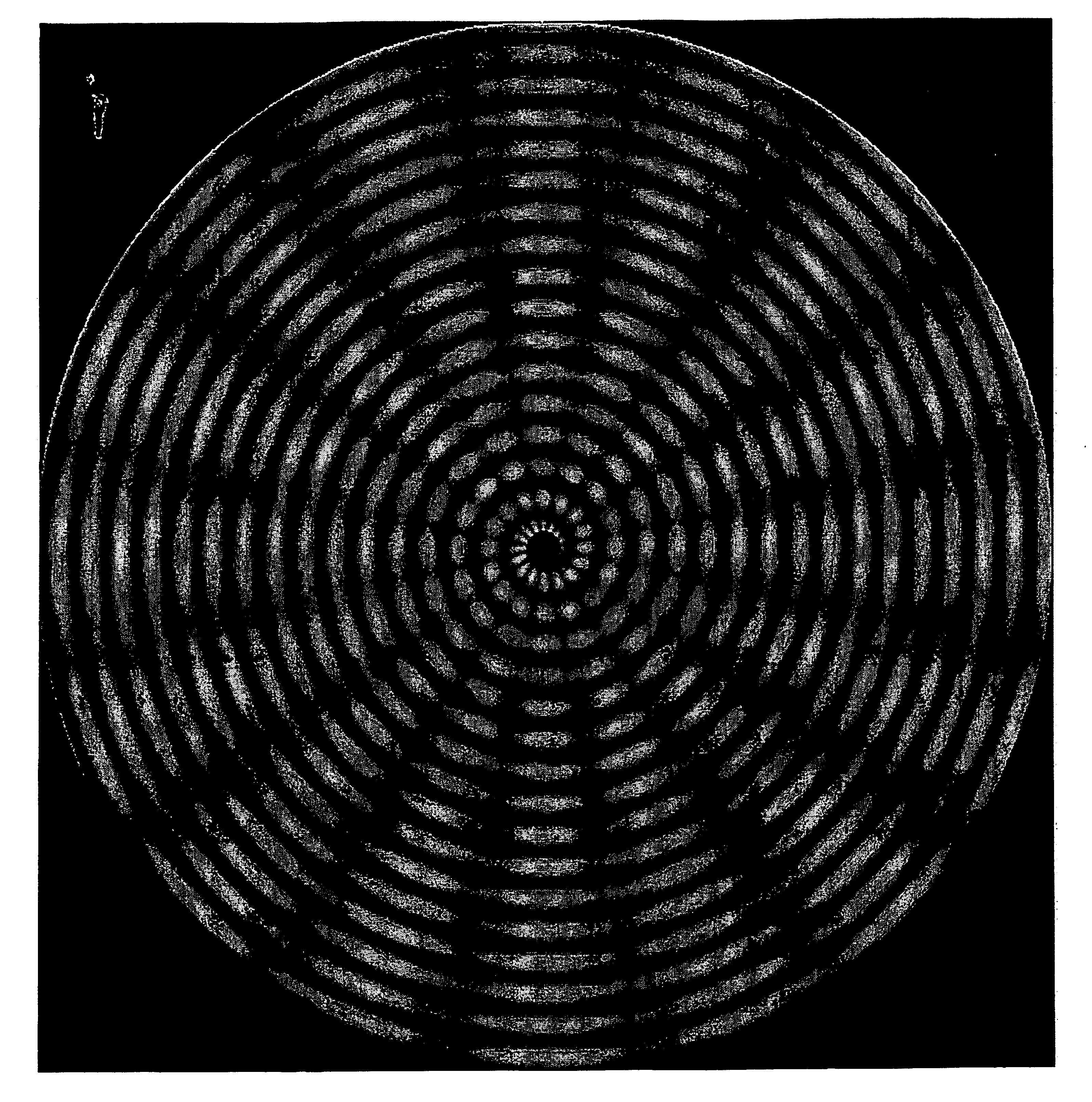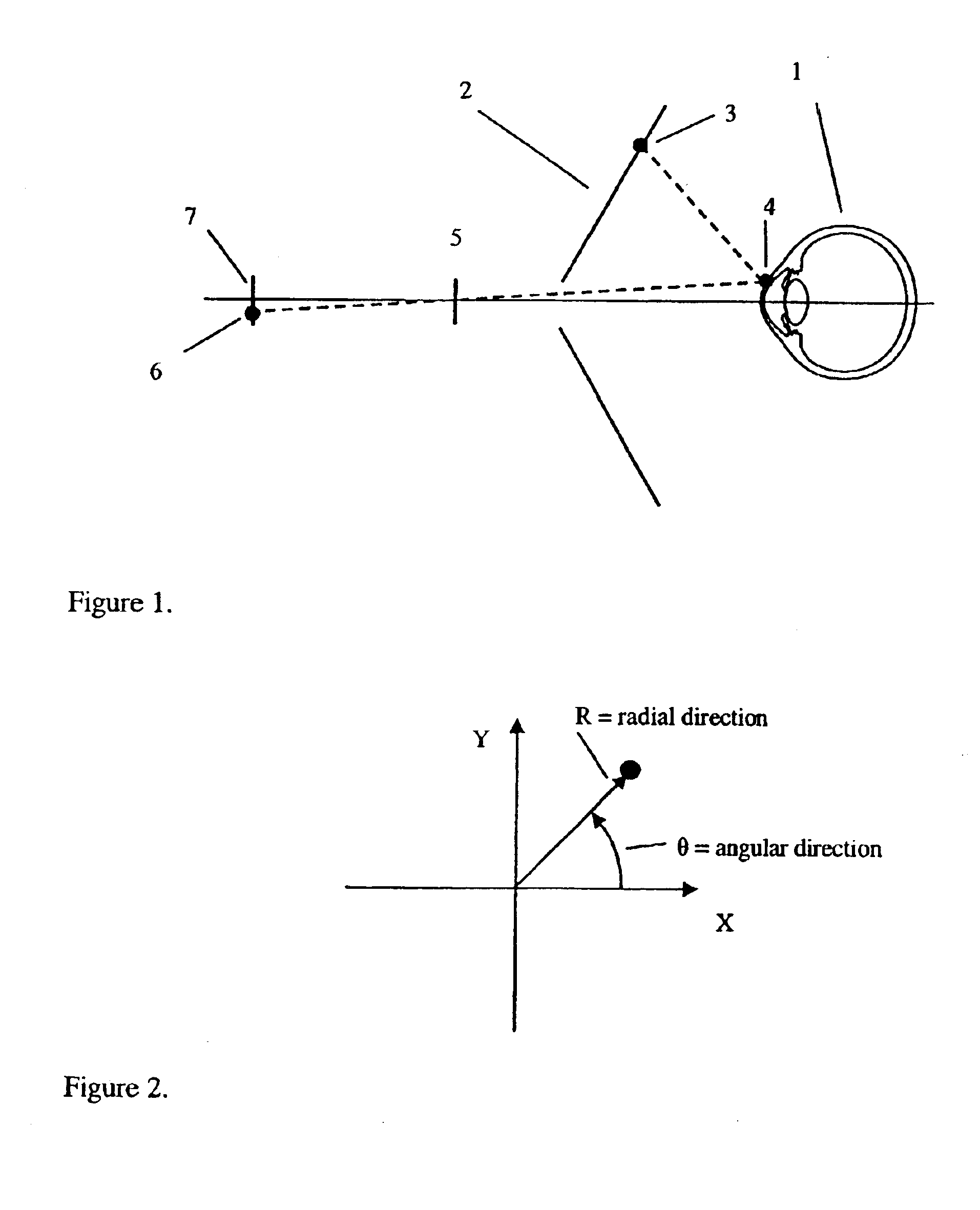Continuous two-dimensional corneal topography target
a topography target and two-dimensional technology, applied in the field of eye examination, can solve the problems of not becoming popular in commercial systems, difficult to know the exact point correspondence between a point on the reflected pattern source and its image reflected off the cornea, and the set of point correspondences that are not always correct, so as to improve surface reconstruction and image processing. robust
- Summary
- Abstract
- Description
- Claims
- Application Information
AI Technical Summary
Benefits of technology
Problems solved by technology
Method used
Image
Examples
Embodiment Construction
[0014]The basic geometry for a reflection based corneal topography system is illustrated in FIG. 1. The eye 1 is positioned in front of the reflection pattern source 2. A point 3 on the reflection source reflects off the cornea at corneal surface point 4 and is focused by lens 5 onto CCD sensor 7 at digital image point 6. The proposed reflection pattern consists of three parts: the radial intensity profile, the angular color profile, and the contrast control.
Radial Intensity Profile
[0015]The radial intensity profile is given by equation (1). I(r,t)={0rr 0cos[(r-r 0)×2 π×N rr Max-r 0+t×N t+π]2+12r 0rr Max0r>r Max
where[0016]r0=radial starting point (mm)[0017]rMax=radial ending point (mm)[0018]Nr=radial cycles[0019]Nt=spiral cycles
[0020]The center of the radial intensity profile is set to zero to correspond to the aperture at the reflective pattern source 2 indicated in FIG. 1. The profile is zero for radial distances up to r0 mm. For radial distance values from r...
PUM
| Property | Measurement | Unit |
|---|---|---|
| angular color | aaaaa | aaaaa |
| spatial frequency | aaaaa | aaaaa |
| powers of sinusoids | aaaaa | aaaaa |
Abstract
Description
Claims
Application Information
 Login to View More
Login to View More - R&D
- Intellectual Property
- Life Sciences
- Materials
- Tech Scout
- Unparalleled Data Quality
- Higher Quality Content
- 60% Fewer Hallucinations
Browse by: Latest US Patents, China's latest patents, Technical Efficacy Thesaurus, Application Domain, Technology Topic, Popular Technical Reports.
© 2025 PatSnap. All rights reserved.Legal|Privacy policy|Modern Slavery Act Transparency Statement|Sitemap|About US| Contact US: help@patsnap.com



